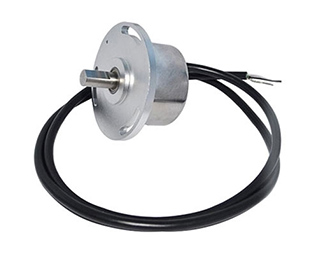Magnetic Angle Sensor Buying Guide
Magnetic angle sensor is a high-performance integrated magnetic sensor. It is a new generation of angle sensor made by using the characteristics of magnetic signal induction and non-contact, and with the microprocessor for intelligent signal processing.
It has the characteristics of no contact and no friction, high reliability and long service life. Magnetic angle sensors are widely used in occasions with frequent mechanical changes, harsh environments, long service life and high reliability.
Next, we will introduce the functions, characteristics and selection criteria of the magnetic angle sensor. We hope that after reading this article, you will be able to buy the magnetic angle sensor that is right for you.
Functions of magnetic angle sensor
You will have a clear idea whether you need to buy a magnetic angler sensor if you know its functions and advantages.
- Measurement of rotational speed and angle of industrial machinery, engineering machinery, construction equipment, petrochemical equipment, medical equipment, aerospace instrumentation, defense industry, etc.
- Car electronic foot pedal angular displacement, steering wheel position, seat position, headlight position.
- Automated machines, motion control, rotation and control of rotary motors.
Advantage
- Automatic compensation for misalignment of magnetic steel position.
- Fault detection function.
- Non-contact and frictionless, non-contact position detection function, it is an ideal choice to meet the needs of harsh environment applications.
- Non-contact, high sensitivity, close to infinite rotation life, no noise, high repeatability, good high frequency response characteristics.
Selection criteria for angle sensors
Before you buy an angle sensor, you need to know the following points.
Frequency response characteristics
The frequency response characteristic of the angle sensor determines the frequency range to be measured, and must maintain undistorted measurement conditions within the allowable frequency range. In fact, the response of the sensor always has a certain delay, and it is hoped that the delay time is as short as possible.
The frequency response of the sensor is high, and the measurable signal frequency range is wide. However, due to the influence of structural characteristics, the inertia of the mechanical system is relatively large. Therefore, the frequency of the measurable signal of the sensor with low frequency is low.
In dynamic measurement, the response characteristics should be based on the characteristics of the signal (steady-state, transient, random, etc.) to avoid excessive errors.
The choice of sensitivity
In general, within the linear range of the angle sensor, the higher the sensitivity of the angle sensor, the better it is. As only when the sensitivity is high, the value of the output signal corresponding to the measured change is relatively large, which is beneficial to signal processing. However, it should be noted that the sensitivity of the sensor is high, and the external noise unrelated to the measurement is also easily mixed, and it will also be amplified by the amplification system, affecting the measurement accuracy. Therefore, it is required that the sensor itself should have a high signal-to-noise ratio to minimize the interference signal introduced from the outside world.
The sensitivity of the sensor is directional. When the measurement is a single vector, and its directivity requirements are high, other direction sensitivity sensors should be selected. If it is a multi-dimensional vector, the cross-sensitivity of the sensor is required to be as small as possible.
Stability
The ability of a sensor to keep its performance unchanged over a period of time is called stability. In addition to the structure of the sensor itself, the factors affecting the long-term stability of the sensor are mainly the use environment of the sensor. Therefore, to make the sensor have good stability, the sensor must have strong environmental adaptability.
In addition, before selecting an angle sensor, the use environment should be investigated, and the appropriate sensor should be selected according to the specific use environment, or appropriate measures should be taken to reduce the impact of the environment.

